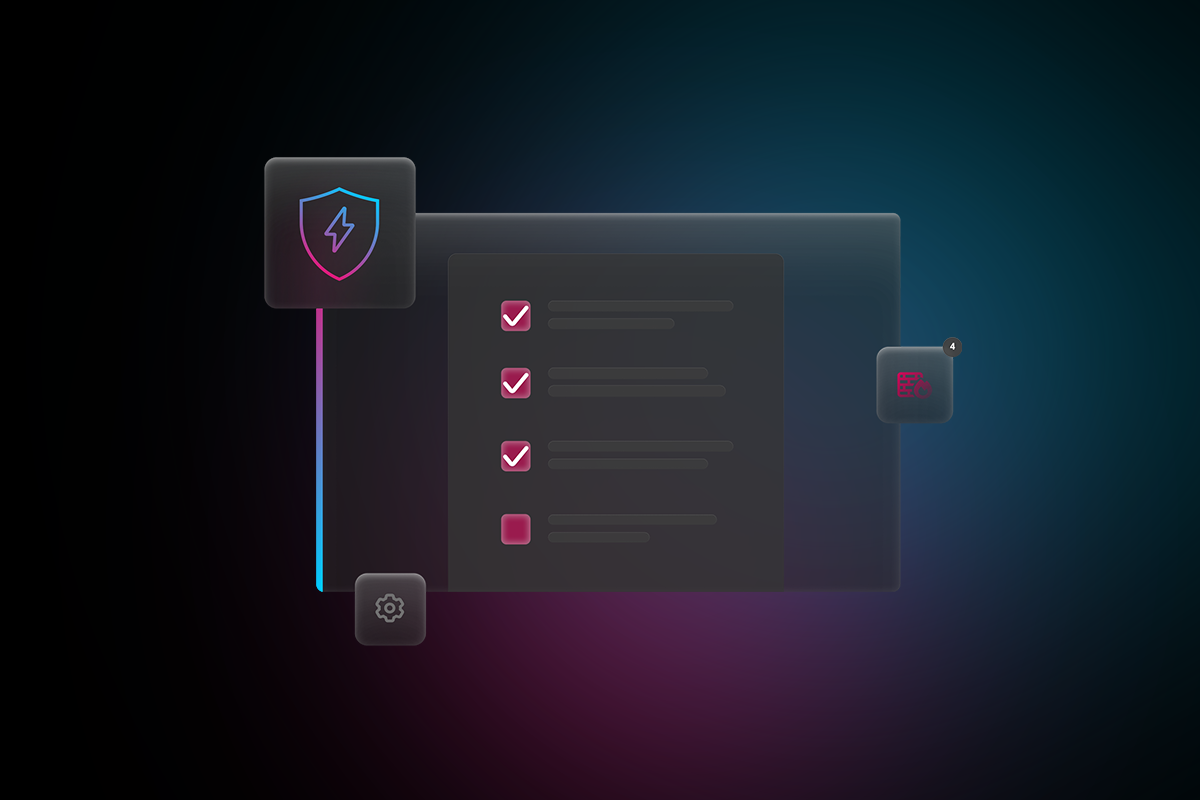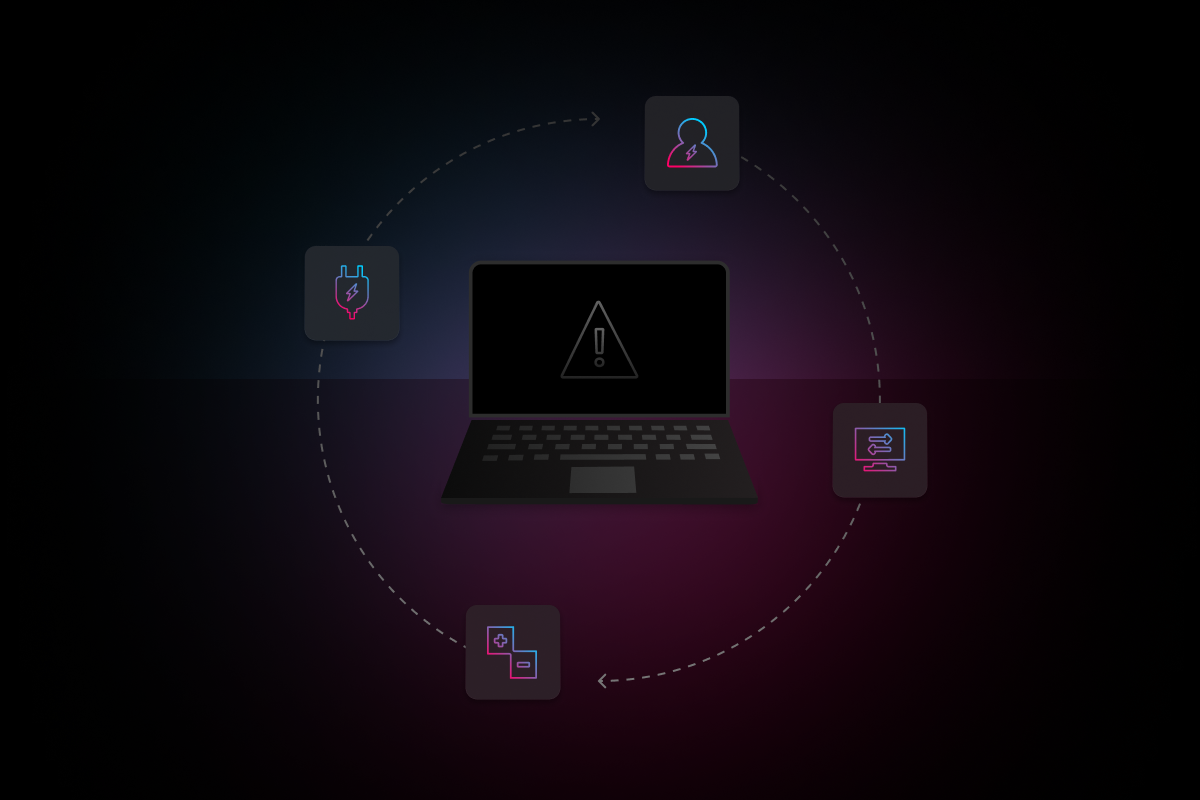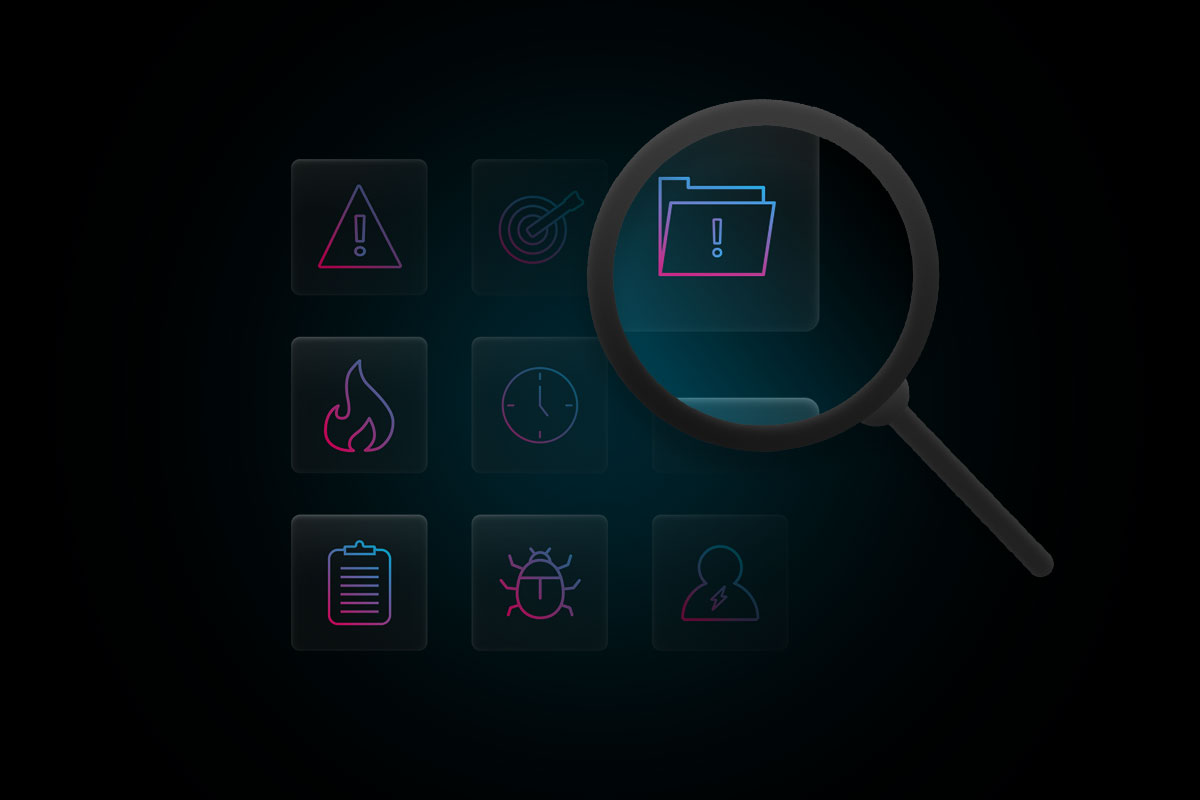
Protecting your business from the ever-growing threat of cyber attack requires a multi-faceted approach. From developing and implementing cybersecurity policies and training programs, to ensuring device, application, and network security, there are a number of different factors to incorporate in your strategy. Overlooking even one component could leave your organization vulnerable.
This Business Cybersecurity Checklist provides you with a step-by-step guide to securing your business and its most valuable assets.
Policies and Compliance
- Document company cybersecurity and BYOD policies
- Schedule regular employee training to ensure cybersecurity best practices are followed
- Identify industry-specific and regulatory compliance requirements for your business
- Perform regular risk assessments and proactively address cybersecurity gaps
- Ensure comprehensive cyber insurance coverage is in place
- Audit third party vendors that have access to your systems to ensure they are compliant with your cybersecurity policies
- Develop a response for security breaches and create a disaster recovery plan
Device Security
- Install Mobile Device Management software on all company devices
- Ensure standardized device configuration is in place
- Install antivirus software on all company devices
- Actively monitor device inventory and health from a centralized dashboard
- Automate the roll out of patches, upgrades, and policies to all devices
- Enable Full Disk Encryption (FDE) on company devices
- Automate screen locks and ensure devices can be remotely locked and wiped in the event of loss or theft
Application Security
- Automate app provisioning and user access management based on an employee’s role and team
- Track access permissions across departments and groups from a centralized dashboard
- Enforce a policy of least privilege for app access
- Monitor file-sharing privileges and data protection compliance
- Maximize security and productivity with a Single Sign On (SSO) solution
Network Security
- Deploy an enterprise-wide Endpoint Protection Platform (EPP) solution
- Deploy an enterprise-wide Endpoint Detection and Response (EDR) product
- Implement a firewall to protect the company network
- Use a VPN for secure remote access to company networks
- Implement email encryption and spam filters
- Perform regular backups and ensure all data is encrypted
- Keep your backups separate from your network (offline), or in a dedicated cloud service
Need help implementing a business cybersecurity checklist?
Applying each step of the business cybersecurity checklist can be a challenge, especially if you’re managing multiple separate solutions with limited IT expertise. Electric gives you access to all of the best cybersecurity solutions in one platform, so you can effortlessly defend your business against cyber attacks. Get in touch with our team of experts to develop your free cybersecurity plan, or check out our Cybersecurity Report to learn more about the most common threats faced by SMBs.
Cybersecurity FAQ
What are the most important components of an SMB cybersecurity strategy?
SMBs should take a multi-faceted approach to cybersecurity, incorporating company policies and training, device security, application security, and network security. By taking a layered approach, SMBs can ensure customer and employee data remains secure against the most common cyber threats.
What cybersecurity policies should SMBs have in place to achieve compliance?
All SMBs should document their cybersecurity policy, security response protocol, and disaster recovery plan. Additional recommendations include regular security audits, third-party vendor assessments, and employee training to recognize potential breaches. SMBs should also identify any industry-specific regulatory requirements to achieve compliance.
How can SMBs secure company devices against cyber attacks?
SMBs can secure company devices against cyber attacks by implementing a Mobile Device Management (MDM) solution. MDM strengthens security by monitoring device health, standardizing device configurations, automating patches and upgrades, and enabling remote lock and wipe in the event of device loss or theft.
How can SMBs securely manage app access and protect sensitive data?
SMBs can strengthen app security by automating application access based on an employee’s role and team. By centrally tracking and managing user permissions, and implementing a Single Sign On (SSO) solution, SMBs can prevent unauthorized access to sensitive resources.
How can SMBs ensure their network is secure against cyber attacks?
SMBs can safeguard their network against cyber threats by deploying endpoint protection solutions, implementing a firewall, encrypting sensitive data, using a VPN, and performing regular data backups.



